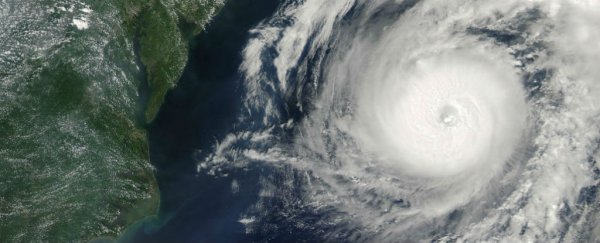A low pressure system strengthened rapidly from a tropical storm on Wednesday to become Hurricane Alex on Thursday. The new Atlantic hurricane is the first one to form this early (in January) since 1938, NASA says, citing the National Hurricane Centre (NHC).
Alex's maximum sustained winds are close to 85 mph (136 km/h), with higher gusts possible. According to The Atlantic, the storm could bring flash floods and mudslides, as well as large, dangerous waves near the coast. A hurricane warning has been issued for several islands off of Portugal including Faial, Pico, Sao Jorge, Graciosa, and Terceira in the central Azores, and a tropical storm warning is in effect for the islands of Sao Miguel and Santa Maria in the eastern Azores.
The earliest view of the storm from NASA satellites measured the strongest sustained winds at close to 60.4 mph (97 km/h) northwest of the storm's centre. Within eight hours, the strongest winds reached 67.1 mph (107 km/h) and shifted east of the storm's centre. Those winds are what later developed into tropical storm Alex.
By 10am EST on Thursday, Alex had hurricane-force winds reaching 25 miles (40 km) out from its centre, with tropical storm-force winds reaching up to 150 miles (241 km) out. This animation shows Alex as it was beginning to form:
 NASA
NASA
Alex is not just the first Atlantic hurricane to form in January, it's also the first North Atlantic hurricane to thrive in January since Hurricane Alice in 1955, which formed on 30 December 1954, said NASA. According to the NHC, the Atlantic hurricane season typically runs from June 1 to November 30, and the first named storm normally appears in July.
NHC forecaster Richard Pasch told NASA that it's very unusual for a hurricane to form over water that's 20 degrees Celsius (68 degrees Fahrenheit), but the lowest layer of the atmosphere is currently estimated to be about -60 C (-76 F), which is a lot colder than the tropical average. The instability this creates is likely what caused Alex to form and intensify so early, Pasch said.
As of 10am Thursday, Alex was located south of the Azores at latitude 31.5 North, longitude 28.4 West and moving north-northeast at around 20 mph (32 km/h). If the storm follows the current forecast track, its centre will move near or over parts of the Azores Friday morning, NASA said.
After that, it's expected to head toward Greenland.
This article was originally published by Business Insider.
More from Business Insider:
